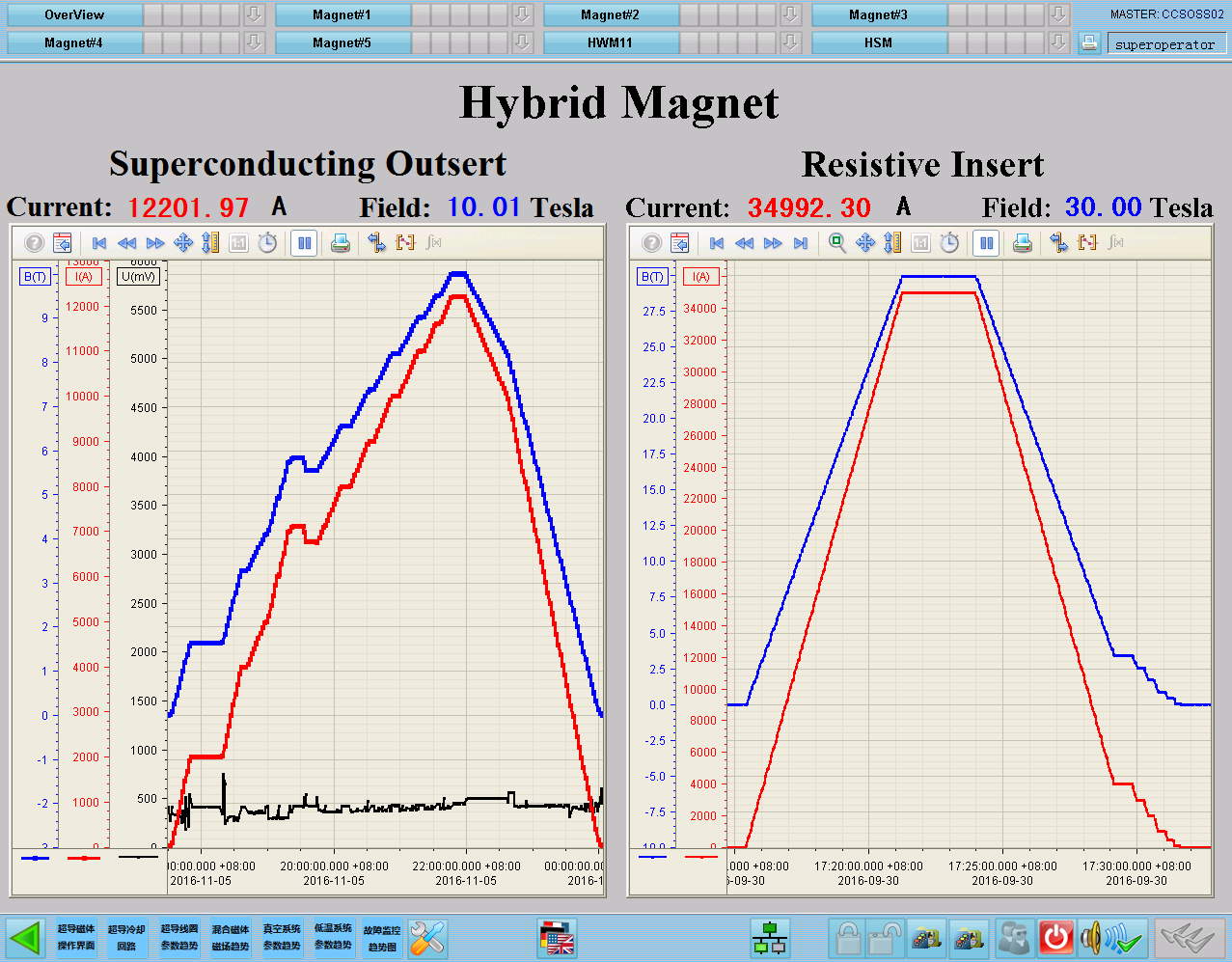November 5th was a busy and exciting day for the Magnet Science and Technology team at the High Magnetic Field Laboratory of Chinese Academy of Sciences (CHMFL) while the large-scale high field magnet system was under test in the magnet development hall in Hefei.
At 21:48, the centre control room was burst with thunderous applause and cheer, and all team members were saying “Congratulations!” to each other.
The large-scale high field magnet system achieved the aim of 10 Tesla high field after years of planning, designing and building. According to previous reports, the 10 Tesla superconducting magnet possesses the world’s biggest magnet bore capable of generating such high magnetic fields.
As an engineering rule, the stronger you make a magnet, the narrower that bore needs to be: it’s just really hard to make a high field magnet with lots of room in the middle. Yet CHMFL has successfully built a superconducting magnet that achieved both: high intensity (10 Tesla) and wide bore (920 mm). It is a new milestone for the development of international high field magnet technology.
A large scale superconducting magnet is a complicated system, which needs not only good electromagnetic and mechanical performance of the magnet itself, but also good Helium Cryogenic Cooling System, High Stability Power Supply System, Security System and Central Control System. The successful test of the superconducting magnet also means a successful inspection of these related systems independently developed by CHMFL.
It is also a significant milestone on the way to CHMFL’s goal of a 40 Tesla hybrid magnet and gives the team at CHMFL new momentum as they approach the final phases of the hybrid magnet project.
The 40 Tesla hybrid magnet is known as a hybrid because it is composed of a 30 Tesla resistive magnet nested in a 10-Tesla superconducting magnet outsert.
The so-called “outsert” superconducting magnet system can generate 10 Tesla within a very large magnet bore of 920 mm, operating at 4.5 Kelvin. It is one of the key components because of the 40-Tesla hybrid magnet because of its high costs, high difficulty, high risk and longer research time and so on.
The 30-Tesla “insert”, a resistive magnet with a 32 mm room temperature bore developed by CHMFL, was tested successfully and reached the goal of 30 Tesla central field by itself in September, 2016.
The achievement of the superconducting magnet is crucial to the success of building the hybrid magnet. The commissioning of the hybrid magnet is to begin in the near future.
By the time the project is completed toward the end of 2016, the 40 Tesla hybrid magnet will be the most powerful magnet in China, which is available to all researchers worldwide, and it will benefit researches in physical, material and life sciences for years to come.

Test results of the 10T superconducting magnet outsert and 30T resistive magnet insert (Image by ZHANG Jun)
Contact:
TAN Yunfei
High Magnetic Field Laboratory,
350 Shushanhu Road, Hefei, Anhui, P. R. China, 230031
Tel: 86-551-65595170
Email: tanyf@ipp.ac.cn
 Tel: +86-551-65591206
Tel: +86-551-65591206
 Fax: +86-551-65591270
Fax: +86-551-65591270
 Emai: zhous@hfcas.ac.cn
Emai: zhous@hfcas.ac.cn
 350 Shushanhu Road
350 Shushanhu Road